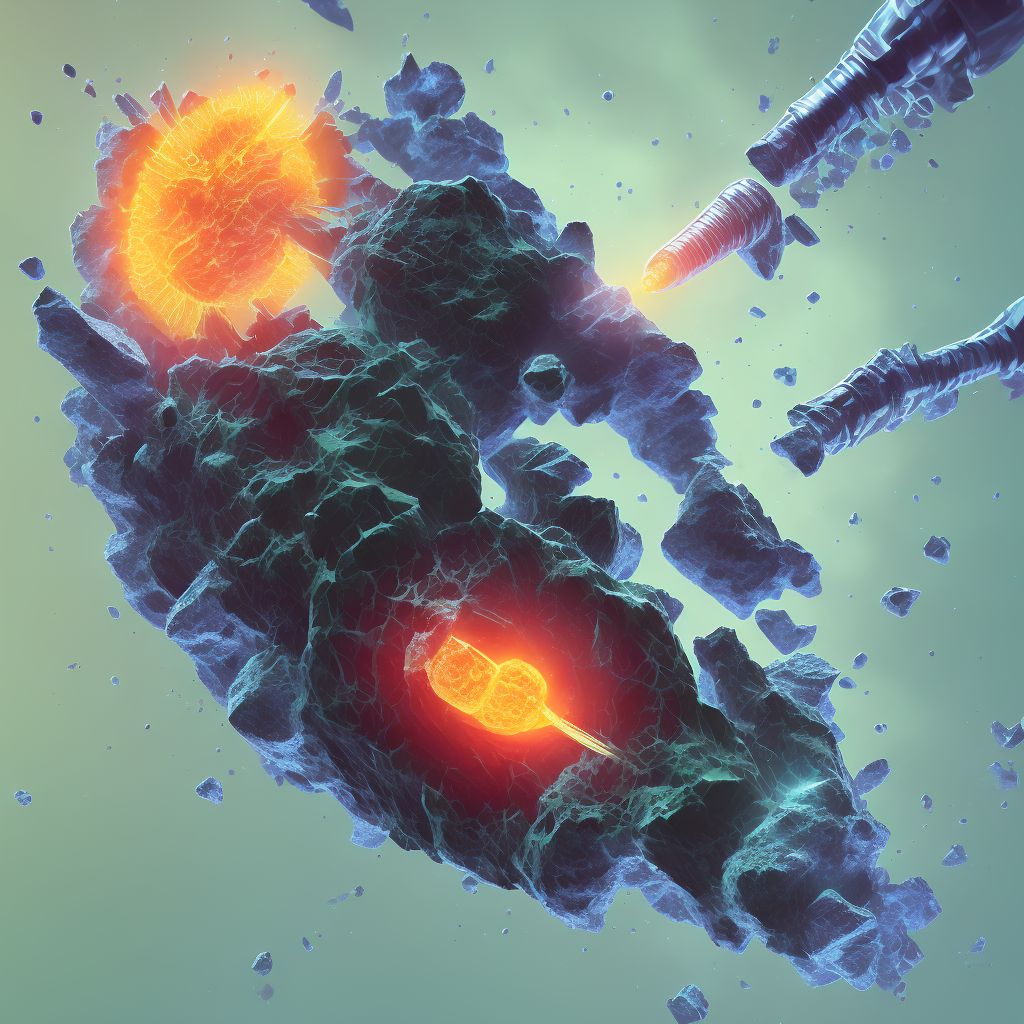
Displaced comminuted fracture of shaft of left tibia, subsequent encounter for closed fracture with nonunion Save
ICD-10 code: S82.252K
Disease category: S82.252: Displaced comminuted fracture of shaft of left tibia
Displaced Comminuted Fracture of Shaft of Left Tibia: Understanding the Condition
A displaced comminuted fracture of the shaft of the left tibia is a severe injury that occurs when the tibia bone in the lower leg breaks into multiple pieces and becomes misaligned. This condition is often the result of a high-energy impact, such as a car accident or a fall from a significant height.
When a displaced comminuted fracture occurs, it requires immediate medical attention to minimize further damage and facilitate proper healing. This article aims to provide a brief overview of this condition, focusing on subsequent encounters for closed fractures and nonunion.
Nonunion refers to the failure of the fractured bones to heal together, resulting in a persistent gap between the bone fragments. In cases of a displaced comminuted fracture of the shaft of the left tibia, nonunion can occur when the fracture fragments are unable to unite or when the blood supply to the fractured area is compromised.
During a subsequent encounter for closed fracture with nonunion, the physician will assess the patient's condition and may recommend additional diagnostic tests, such as X-rays or CT scans, to evaluate the healing progress and identify any potential complications.
- Symptoms: Common symptoms of a displaced comminuted fracture of the shaft of the left tibia include severe pain, swelling, bruising, and difficulty bearing weight on the affected leg.
- Diagnosis: A physical examination, combined with imaging tests, helps the healthcare provider determine the severity of the fracture and assess the presence of nonunion.
- Treatment: Although this article does not discuss treatment, it is important to note that treatment options for this condition typically involve surgical intervention, such as open reduction and internal fixation (ORIF), to realign and stabilize the fractured bones.
- Recovery: The recovery period for a displaced comminuted fracture of the shaft of the left tibia can be lengthy and may require physical therapy to regain strength and mobility in the affected leg.
In conclusion, a displaced comminuted fracture of the shaft of the left tibia is a severe injury that requires immediate medical attention. Subsequent encounters for closed fractures with nonunion involve evaluating the healing progress and identifying any complications. It is crucial to follow the advice and treatment plan provided by healthcare professionals to ensure proper healing and a successful recovery.
Treatment of Displaced comminuted fracture of shaft of left tibia, subsequent encounter for closed fracture with nonunion:
Treatment Options for Displaced Comminuted Fracture of Shaft of Left Tibia: Subsequent Encounter for Closed Fracture with Nonunion
A displaced comminuted fracture of the shaft of the left tibia can be a challenging injury to treat. When a fracture fails to heal properly and results in nonunion, additional treatment options become necessary. In this article, we will explore some of ...
To see full information about treatment please Sign up or Log in